Trust Flow is a score ranging from 0 to 100 that is used to measure how trustworthy a page or website is from the pages that link to it. Initial scores were assigned to a group of manually reviewed authority websites, and as they link to other websites, some of their trust is passed through them. Part of the Trust Flow measurement includes Topical Trust Flow. This one “reveals how influential a web page, subdomain or root domain is to a particular topic or category.”
65% of marketers believe that domain rating / domain authority is the most important metric for overall backlink quality.
However, there are also other metrics that are just as important as domain authority for evaluating the quality of links that lead to your domain. This is the case of Trust Flow, a metric to evaluate the trust and reliability of a website.
But in concrete terms,
- What is the Trust Flow and what is its use for SEO?
- How do we obtain this measure and what does it indicate about the health of your site?
- How can we use the Trust Flow in SEO?
To enlighten you about this measure, I will try to answer these different questions that come up every time when we talk about the value of a backlink using Trust Flow.
So follow along!
Chapter 1: What is Trust Flow?
In the world of SEO, there are many metrics that vary from one tool to another and are used to monitor certain aspects of a website. In this chapter, we will discover the Trust Flow metric.
1.1 What does Trust Flow mean?
The quality of content remains a key element for the success of online sites. That’s why most sites try to create relevant content that contains accurate information and meets the expectations of Internet users.

This allows users to find content more quickly online. However, monitoring these factors, including the relevance and consistency of content, is not an easy task.
It requires not only time, but also the right tools. In general, sites seek to measure Trust Flow and Citations Flow, two metrics that are essential for estimating the quality of links and are a major indicator of a site’s reputation.
This set of metrics was developed by Majestic, a company that has one of the most popular site verification tools.
Trust Flow is a metric designed to quantify the trustworthiness of a site and is obtained by examining the quality of inbound links to that site
As Majestic states,
“Majestic has compiled many trusted sites by referring to a manual review of the web… Sites with strong links to a trusted site are likely to get higher scores, while those with questionable links will score much lower.”
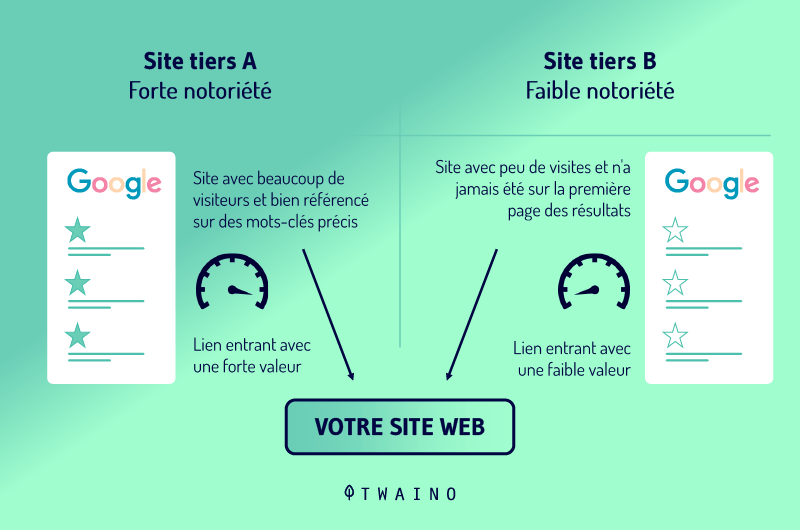
In other words, links from sites deemed trustworthy should increase your trust score, and conversely, links from sites deemed untrustworthy should decrease it.
Trust Flow is an interesting metric to evaluate the performance of your competitors as well as your own. Combined with other SEO metrics, it can help you get an overview of your SEO performance.
1.2) How do Trust Flow and Citation Flow differ?
Citation Flow is another trendy flow approach that has emerged more recently. Since it is easy to confuse the two, we will try to clarify what makes them different.
Like the Trust Flow, the Citation Flow estimates the awareness of a link, based on the number of clicks it generates.

But the Citation Flow does not always consider the quality of the links. As a result, we can have popular sites that have a high Citation Flow, but do not have a good trust rating.
Generally, sites that have a lot of links pointing to them will receive a good Citation Flow score.
If your site gets a Citation Flow that is significantly higher than the Trust Flow, it probably indicates that a large number of low quality links are pointing to your site or are hosted on it.
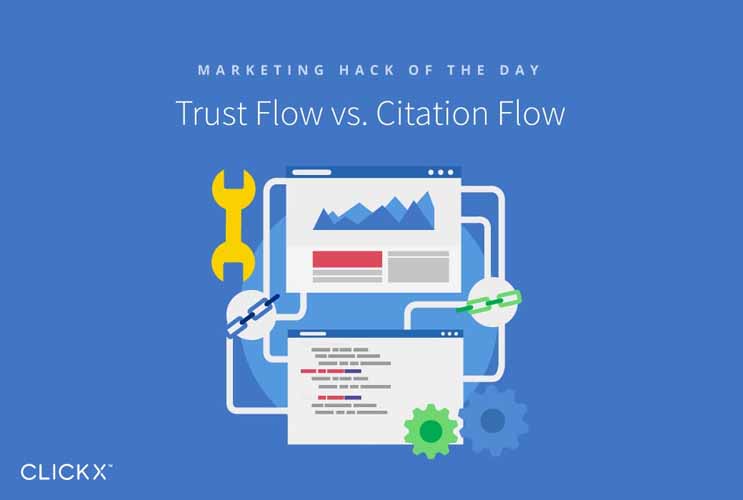
Source : optimoz
To optimize your site’s Trust Flow score, it is important to make sure that this score is approximated by your Citation Flow.
Indeed, these two measures are closely linked, because if your Trust Flow were to increase, your Citation Flow would also. On the other hand, if your Citation Flow were to increase, this does not guarantee that your Trust Flow will also increase.
On the other hand, a site with a high Citation Flow that points to your website gives your Citation Flow a boost.
However, if the site scores well in terms of Citation Flow, but has a low trust score, your website’s Trust Flow will suffer.
With that said, you can see why it is harder to get a good Trust Flow score than it is to get a high Citation Flow score.
This is because your Citation Flow will always receive a higher score because it counts links that are not relevant, while Trust Flow does not.
This is precisely why we consider Trust Flow to be much more important than Citation Flow.
Don’t believe us? So let’s take a look at what Google is doing. The search engine favors sites that have quality backlinks, and therefore a high Trust Flow.

This highlights the fact that there is a correlation between trust flow and organic search traffic. In fact, because sites with a higher trust score tend to rank higher on Google.
1.3. What is Topical Trust Flow and what is the difference Trust Flow?
When viewing a site’s backlinks on Majestic, you may notice an additional metric: a second Trust Flow score next to a topic.
For example, Twaino’s blog may appear next to the topic “Internet/Search”. There are many different categories in which online content can be classified.
This measure, known as Topical Trust Flow, may differ from Trust Flow, which is an overall domain score.
The Topical Trust Flow examines the topic of a page to determine its degree of influence in a given area.
Given the importance of user intent in SEO, this is a fundamental aspect that examines the reliability of online content.
As an example, it is not obvious that you would go to Doctissimo to get SEO tips. Similarly, you wouldn’t rely on Twaino’s blog for health advice.
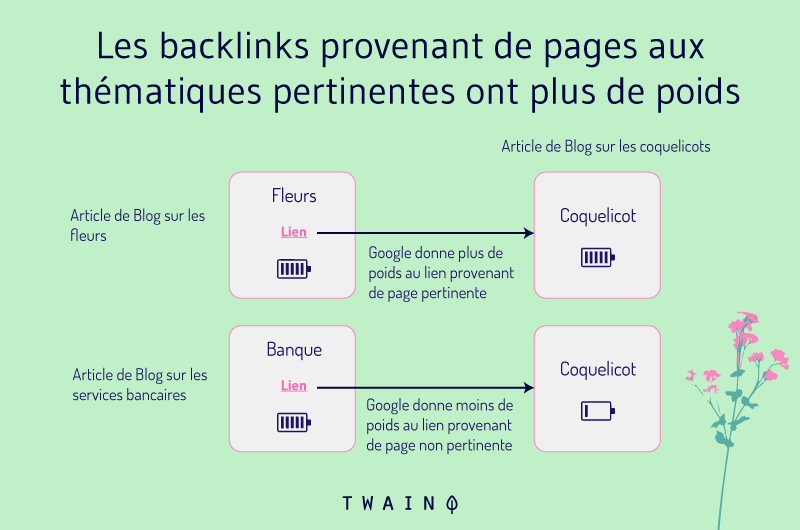
These are both blogs that have a good thematic reliability score in their respective niches. But it’s unlikely that one would have a high reliability score in a niche that isn’t its own.
As for the difference between Topical Trust Flow and Trust Flow, they differ in that the former is specific to the industry or niche in which the sites are located.
Chapter 2: How is the Trust Flow calculated and what is its importance for SEO?
Trust Flow is not just another metric in the SEO world. It is a metric that is of paramount importance that all sites should pay attention to in order to boost their performance.
This chapter is dedicated to the calculation that leads to the trust score and its place in SEO.
2.1. How is the Trust Flow calculated?
Trust Flow scores are established on a scale of 1 to 100. As Trust Flow is a proprietary metric, the principles of the calculation that establishes the score are not well known.
However, Majestic has provided details on its blog over the years about the factors that influence the trust score.
For example, the Citation Flow tool starts with a raw number for each URL and most are automatically created by machines.
But the Trust Flow tool starts exclusively with sites that are selected by real developers, writers and editors.
In simple terms, to establish the trust score, Majestic evaluates several trusted “originating sites”. This consists of a manual review of several trusted sites such as Google.
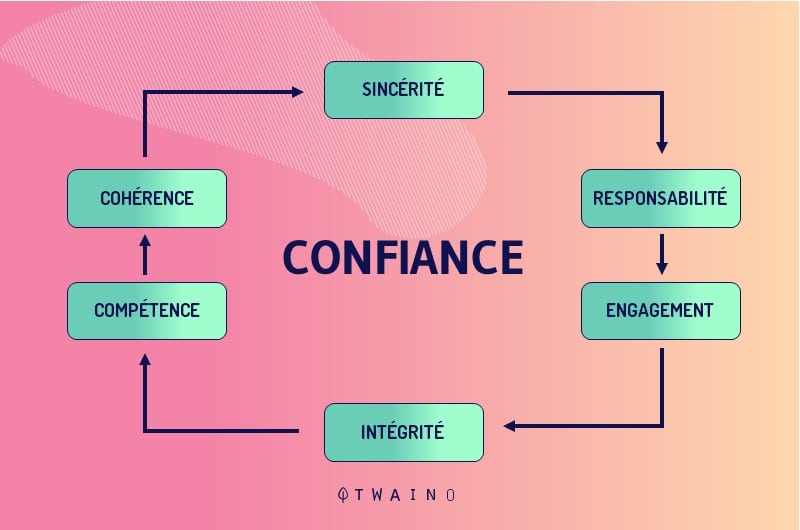
The information collected is then processed on a logarithmic scale to determine the rating of these so-called origin sites. For this reason, Trust Flow is difficult to manipulate by “black hat” methods.
In addition, URLs and websites that are closely related to one of these origin sites will have a higher trust score than those that have much less.
The reasoning is the same as that of a professional reference. The more positive references someone has from experts in their field, the more likely you are to hire them, right?
That’s what makes Trust Flow a very powerful metric. By checking it for some of your pages, you will be able to boost the visibility of it.
Although the specific formula for calculating Trust Flow cannot be provided explicitly, the aspects discussed in this part should guide your SEO strategy to build trust for your domain.
2.2. Why is Trust Flow so popular?
The growing popularity of Trust Flow is largely a result of the unfortunate demise of another tool, specifically Google’s PageRank feature.
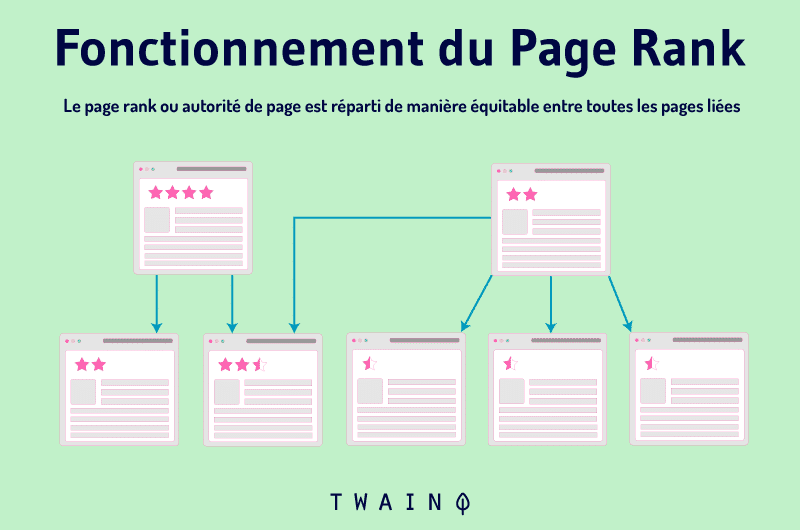
PageRank was particularly reliable during its existence, but was slowly abandoned by Google, leaving a gap in the SEO world.
Feed metrics have filled the gap, with software to measure tricky metrics offered by companies like Moz and Majestic. While other scoring tools exist, it’s hard to compare them to the accuracy of Trust Flow.
Google stopped updating PageRank in 2013. It was after that that Trust Flow and other tools gained momentum.
But today, Trust Flow is seen as a more reliable and accurate ranking system than PageRank was.
Since PageRank was dropped, what is considered important in SEO measurement has changed completely, which is part of the reason Trust Flow was born.
Trust Flow’s value estimates are in line with what Google is promoting and looking for, as we discovered earlier.
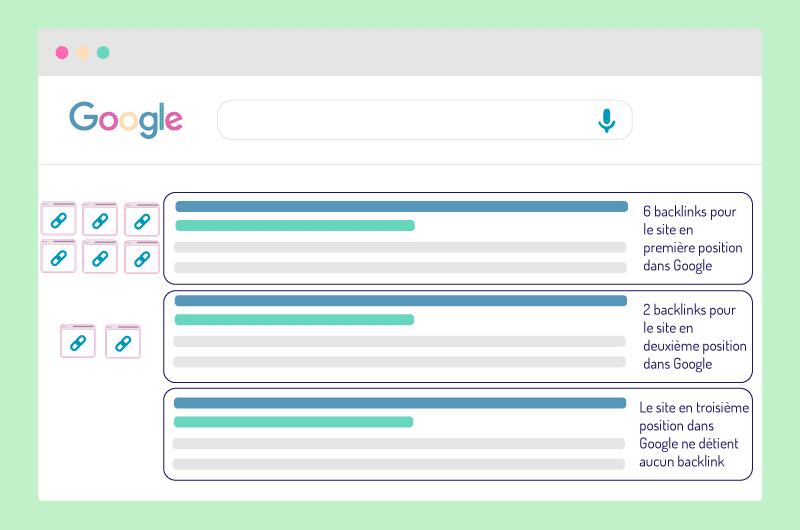
This allows marketing departments and agencies to create more effective web pages in the way Google likes.
It’s clear that Trust Flow is changing the way sites are built, as it’s important to make sure you have a high-quality site.
Likewise, you need to make sure that all the pages your site links to, as well as all the pages that link to it also have a high value trust flow.
2.3. Is Trust Flow important for SEO?
Just like any other third-party tool, Trust Flow is a third-party metric developed to help SEOs and marketers make informed choices about link building.
Different SEO tools use various metrics to measure the quantity and quality of backlinks a website receives, as well as the relative ranking potential associated with keywords.
Remember that your site’s ability to generate backlinks is critical to moving up in the search results

But the quantity of links you manage to generate is not enough, because Google favors quality links. Other links on the contrary can harm your site, hence the importance of examining the quality of sites that link to yours.
Let’s take a closer look at how Trust Flow can help you and how it works in your favor.
2.3.1. Keywords are still crucial
For some marketers, keywords were doomed to disappear when things started shifting to quality content and backlinks, but alas, they were wrong.
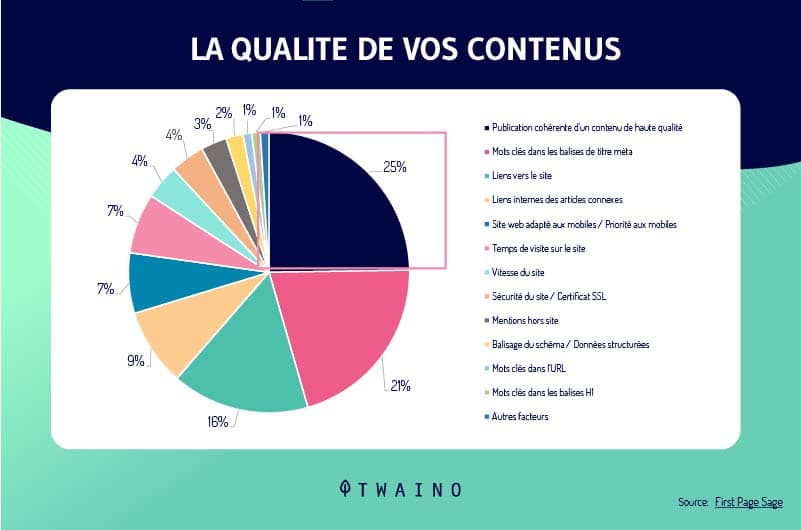
In SEO, keywords still reign supreme, and it’s perhaps more important than ever to use high-potential keywords on your pages.
Using relevant and effective keywords on your sites has actually become more important with the end of PageRank, as it has unintentionally helped eliminate keyword stuffing.
Stuffing a page with massive amounts of keywords in an absurd way to boost a page’s ranking now has the opposite effect. In fact, it goes against the principle of quality, not quantity, that Trust Flow promotes.
2.3.2. Quality is better than quantity for backlinks too
Creating consistent content gets you ranked high in Google search results, but solid, relevant content is actually more.
Content that speaks to your specific audience and addresses a specific need will attract more traffic and help improve your Trust Flow on that particular topic.
in other words, the higher the quality of your backlinks, the higher your page will rank in Google search.
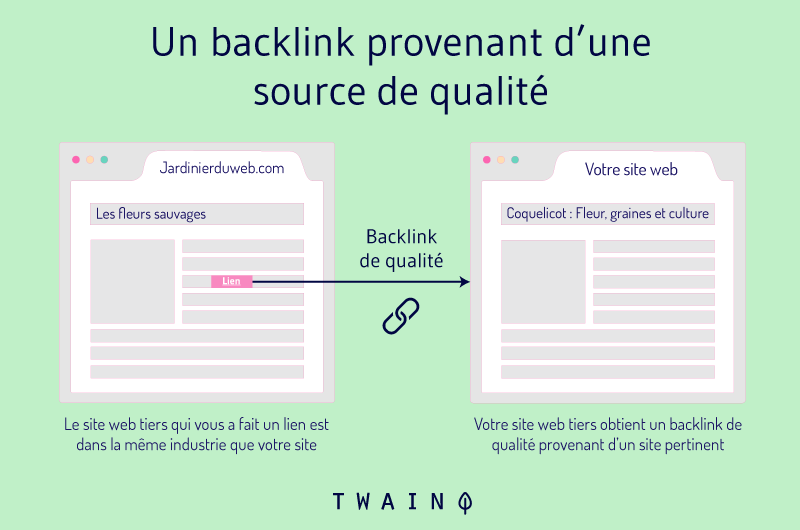
This helps Google to verify that your profile is that of an expert on the subject in question. The search engine will then reward you by bringing you to the top of the search results, which will obviously make it easier for visitors to find you.
Chapter 3: How to measure your Trust Flow and how to boost your score?
If you’re now convinced and are thinking about knowing your website’s trust metric, the next step is to know how to measure Trust Flow and Citation Flow.
In this chapter, we discover:
- How to do it;
- How to interpret your scores;
- And how to boost your scores.
3.1. Determining your scores is the foundation of any successful backlinking campaign
There are tons of trust flow measurement tools available online, but they are probably very expensive.
Yet, there are many free backlink checkers that work as Citation Flow and Trust Flow checkers.
But one of the best tools is none other than the Majestic browser extension. It is available on both Chrome and Firefox.
This tool allows you to check the pages of your site and those of other sites you link to make sure they have a high trust score. It helps you be aware of any web pages that could lower your own score.
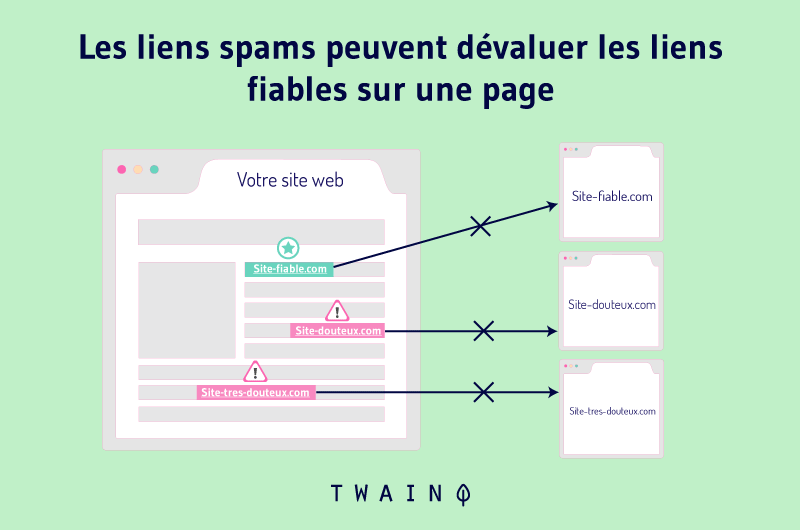
Start adding the Majestic Extender to your browser and open it as soon as it is installed. Then add your domain as below and run the search.
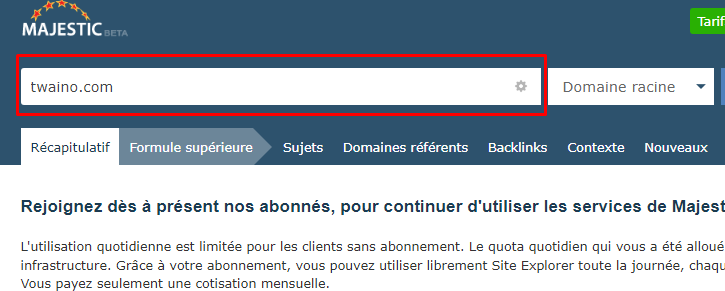
The tool will generate a report with your different scores, if you have a subscription you can explore all the options available.
3.2. What is a good Trust Flow?
When implementing your quality link strategy, it is essential to take into account the Trust Flow score of the site from which you are requesting links.
Indeed, you need to know if their site’s score is good enough and if it will prove beneficial to your site. In general, the following three categorical levels distinguish a good trust score:
Above 50: This score is a high level of trust. If your site is in this range, you can perceive its trustworthiness from sites like YouTube, TED Talks, Yahoo, LinkedIn, Vimeo, etc.
Between 10 and 50: This Majestic Trust Flow score indicates the intermediate level of trust. E-commerce sites and some news sites such as Reuters fall into this range.
Below 10: This reflects a superficial level of trust. Most new or spammy sites may fall into this range. If your website falls into this category, you may want to reconsider your approach to SEO and your link building strategy.
Also, the average ratio of Trust Flow to Citation Flow should be 0.50. Using the data from the report on our site, we get 0.48 or 14/29.
A Citation Flow ratio much higher than the Trust Flow can affect your ranking. This indicates that your website has a lot of low quality links and content.
3.3. how can you increase your Trust Flow?
The easiest way to increase Trust Flow is to get links from reliable websites. However, this is not as easy to implement as this statement implies.

Note that there is an entire industry devoted to building links from other sites. There are thousands of agencies that do this for sites that want to get more links.
Basically, if you receive links from a website, its Trust Flow will go through those links and affect yours. Thus, a highly trusted site will transmit more Trust Flow than less trusted websites.
To generate the trust score, it is a set of complex calculations that measure the trust flow between websites and give each website or web page its own trust flow score.
That said, content and content producers that link to trustworthy sites will be given a potentially higher score.
Also, having a healthy link profile is important in that it shows that your account is “authentic”. The fact that your account only has links with a high trust flow can also indicate excessive manipulation or engineering.
While this may not be true, a profile that also has links with a low trust flow will look more natural.
To start building links from websites to boost your Trust Flow, use a tool to check the Trust Flow of a website and its pages.
2.4. Three ways to boost your website’s trust flow
Consider this, if you are looking at the trust score of other sites to find backlinking opportunities, it is likely that other sites are doing the same for you. Therefore, your goal should be to increase your Trust Flow.
The key is to find quality backlinks with a high authority score. Quality over quantity brings significant value. To do this, consider :
2.4.1. Linking with influential people
Connect with influencers in order to generate quality backlinks. When looking for influencers, make sure they are actively present in your niche or industry.

To start, research your keywords and list the top bloggers and other professionals that appear in the SERPs.
Then, check out Majestic’s backlink tool to monitor their Trust Flow and to make sure their Topical Trust Flow falls under your industry.
Contact these influencers to spread the word about your business and offer them quality content to solicit a backlink.
When you offer them something they find interesting, they will not hesitate to accept your proposal and you will establish valuable relationships.
2.4.2. Publish posts on sites with excellent scores
Guest posting is another great way to build authority backlinks from top sites and get a good Trust Flow score.
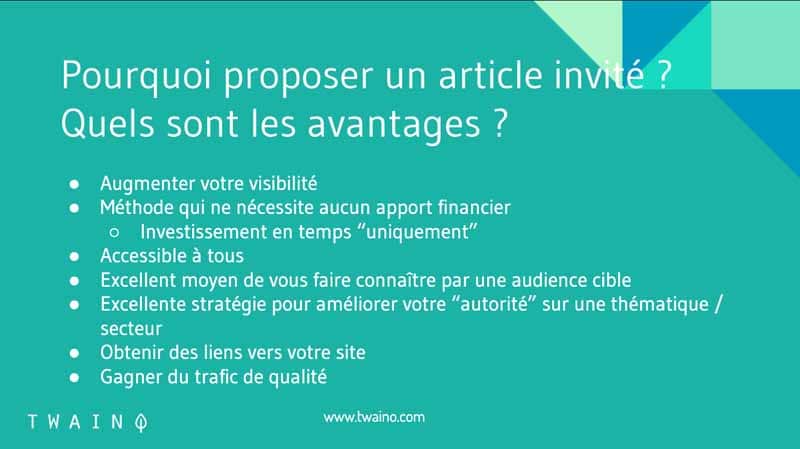
Like influencer research, when you find a guest posting opportunity, run the site through Majestic’s tool to check its trust flow.
If a site’s score doesn’t exceed 10, there’s no point in creating content to get it published on it. Next, make sure that the links pointing to you in such content are not Nofollow.
When the site does not follow the links posted by guests, these backlinks do not contribute to your Trust Flow.
2.4.3. Create internal links
Creating links to internal pages is a relatively simple process to improve your Trust Flow and your SEO.

As you create content, make sure it contains at least two to three links to other pages on the site. A good homepage will also help the trust flow and SEO of all the pages that link to it.
In addition to contributing to SEO, internal links make it easier for your visitors to navigate your site.
2.4.4. Continuously check backlinks
Continuously auditing backlinks doesn’t necessarily increase your Trust Flow, but it does help keep your score high and healthy.
By auditing your backlinks and removing unwanted links, your trust flow will always be high
This high score is proof that you take care of your site, so others will find it high quality and worth linking to.
As a result, other sites will feel more confident about linking to your site, which of course boosts your SEO.
Chapter 4: How can you use Trust Flow in your SEO?
As mentioned earlier, Majestic’s Trust Flow and Citation Flow have several benefits in terms of a website’s marketing campaign.
It is ideal for determining the value and effectiveness of your overall website SEO campaign.
However, these SEO metrics can also be used in many other ways than determining the trustworthiness of your website. This chapter focuses on the other uses of the Trust Flow and Citation Flow metrics.
4.1. Link Prospecting
Trust Flow is a great metric for identifying potential link opportunities.
Therefore, if you are looking for guest post opportunities, simply add the sites in the “Backlinks” option and follow the same steps listed before to screen them.

You’ll then have a great list of relevant link opportunities that will help you improve your ranking. You can also build a list of directories to see if they are worth listing your site on.
For example, if you’re new to a directory, put it in Majestic to see if it’s worth listing your company’s credentials on that directory.
4.2. SEO audit to identify and clean up toxic backlinks
Some websites resort to Black Hat SEO or Negative SEO, which consists of damaging your website’s reputation by linking malicious websites to yours.

So, if you notice a pattern of links from domains with a Trust Flow of 10 or less, you may be targeted by a competitor.
You need to look for these toxic backlinks and disavow them. While these links may affect your pages in the short term, in the long term they will help you get rid of your rogue competitors.
In general, links with irrelevant topical trust flow and links with low trust flow are bad for your site. That said, as part of your audit, you should look to identify topically irrelevant links and those with low trust flow.
4.3. Analysis of competitors
Competitors are also those sites that compete with you in the SERPs for the same keywords.
In some cases, it can be a competitor who sells the same products or provides the same service as you, but who relies on other channels than SEO.
Fortunately, there are several resources like Ahrefs and SEMrush that help you identify your different competitors. If you don’t have these tools, you can enter your main keywords in a Google search and see what sites come up.

However, you must verify that the website is indeed a competitor in terms of business model and product offering.
Also, before proceeding with the competitor link analysis, make sure you only analyze competitors with relevant links.
A site that ranks without topically relevant links is futile and certainly spam-fueled. Therefore, it would be useless to waste your time analyzing these sites.
Trust Flow allows you to sift through your competitors’ link profiles to determine which ones are worth acquiring.
In fact, after identifying the competitors, you can enter these domains into Majestic to find the one with the best backlink profile.
Majestic Trust Flow will help you determine which keyword-driven topics are necessary to outrank competing sites.
4.4. maintain your thematic relevance to your niche
When creating content, it’s crucial to stay focused on your target market. This can contribute to higher visibility in search queries, provided you target the right keyword.
However, keyword-focused content should not stray from your target market, which could disrupt the SERP. Your content could compete with irrelevant topics.
Evaluating your SEO by Trust Flow Topique will ensure that you stay on track and your content may link to related websites.
Chapter 5: Other Trust Flow Metrics Issues
In this chapter, we will discuss a few issues related to the Trust Flow metric.
5.1. Why is Trust Flow called Flow?
As sites are linked to each other through backlinks, trust “flows” between them. For example, if a site A creates a link to a site B, then the trust is transmitted from site A which is the site of origin to site B.
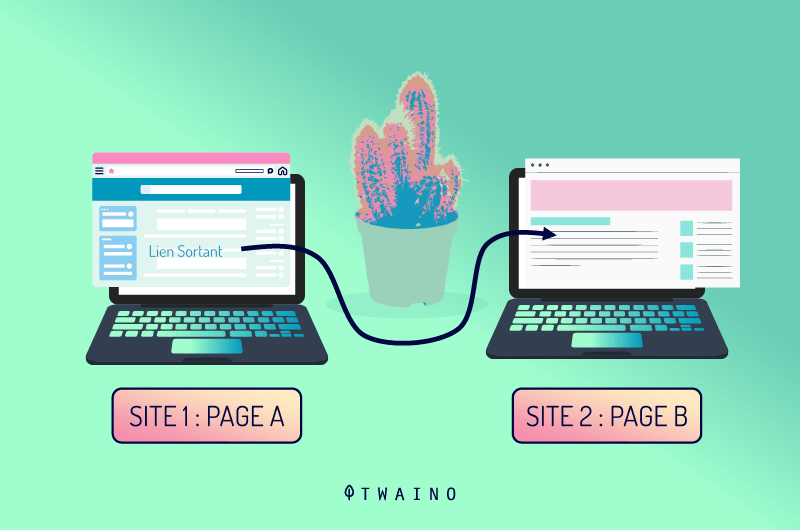
With other metrics, we say that site A transmits part of its juice to site B. When several sites link to site B, the trust flow of site B becomes larger and larger and shows that it is popular.
5.2. How can we look for the Trust Flow of influencers?
One of the biggest uses of Trust Flow is to analyze the profile of influencers. To do this, enter a URL that leads to one of your influencer’s profiles, then choose in the box next to it the type of URL you want to analyze.
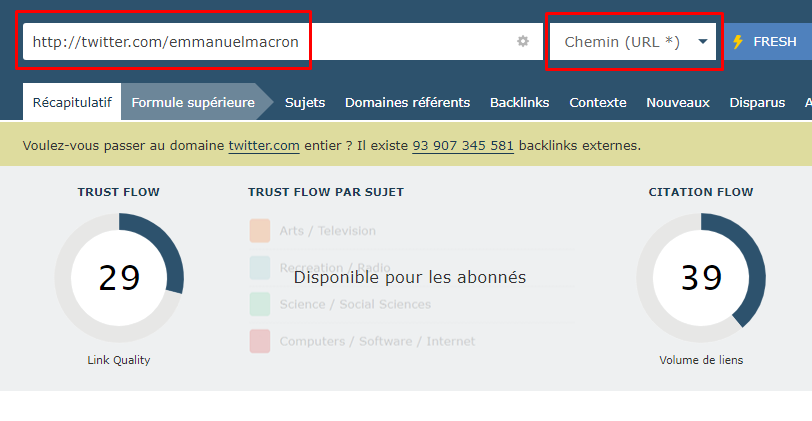
When you enter the URL of a profile, you will choose Path (URL), but when you enter the site of an influencer, you will obviously choose Domain. In our case, we analyzed a Twitter profile that has a Trust Flow score of 29.
5.3. How to build a high Trust Flow for your blog?
It may sound simple, but not so much, because you will have to build a high Trust Flow link to get authoritative backlinks. But how can you get authoritative links and get rid of bad links?
Basically, there are five ways:
- Connect with influencers;
- Connecting with influential sites that link to influencers;
- Publishing content on relevant sites;
- Educating bloggers on your site;
- Removing bad links.
By implementing these actions, you will increase the Trust Flow score of your site.
Conclusion
Trust Flow is one of many SEO metrics and it allows you to evaluate the trustworthiness of sites. It is accompanied by two other metrics, namely Citation Flow and Trust Flow Topical which gives a more detailed overview of a website.
SEOs can use this to refine their strategies and increase their site’s performance in search engines.
These metrics can help identify potential link opportunities, evaluate competition, audit backlinks and improve the quality of your content.
Increasing and maintaining these metrics can have an impact on the overall health of your site and how other content creators perceive it.
With the tactics discussed in this article, you can increase your Trust Flow score and other metrics.
If you’re already using these metrics, tell us about your experience in the comments and feel free to share the article to let other bloggers know about it.




2 thoughts on “Trust Flow & Trust Flow Topical”